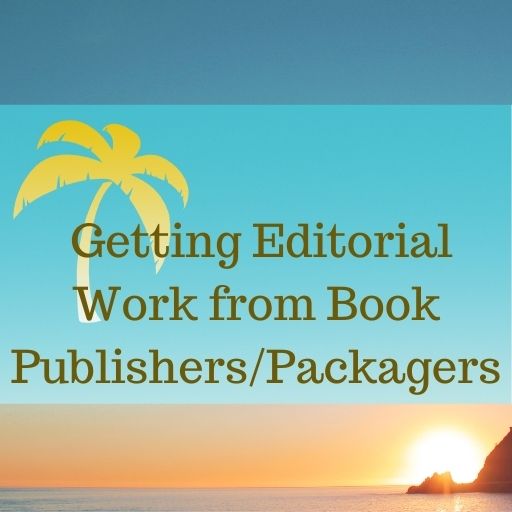6 Questions to Ask Potential Publisher Clients
Many freelance editors are interested in getting editorial work from book publishers and packagers, and often they’re so focused on landing the client that they don’t think about setting expectations for their work.
Then the first project is assigned, and they have less time than they normally have with indie authors, they’re asked to sit in on meetings, do tasks they may not have done before (such as coding or styling a manuscript), fill out paperwork, use an unfamiliar content management system, and more.
If you don’t know what questions to ask as you’re onboarding with a company, your hourly rate can end up in the toilet.
Over the years, I’ve worked with a number of publishers, some small, some huge, and most of them have been good clients.
Some of them have not. In a very few cases, the clients were more interested in exploiting me than in establishing a reciprocal relationship that could do us both a lot of good. But in most cases, the problem has stemmed from a mismatch in expectations.
This happened more often earlier in my career before I figured out what I needed to do to help ensure our expectations matched.
Since no two companies do business the same way, it’s important to work out the details before you agree to a project fee.
Some questions to ask:
1. How many rounds of editing does the offered fee include?
Most editorial projects are paid by project fee, and whether this fee works out for you depends on how many rounds of edits are needed. For some publishers, the expectation is that you will get the ms into publishable shape no matter how many rounds of development it needs. And some projects need a lot of development. In other cases, you are expected to do the best you can in one round of editing.
Pro tip: Ask to see the manuscript before committing to the project fee. If this is not possible (and it may not be), make sure that the client knows that you expect the ms to be in reasonable shape and that if it’s not you will have to ask for a higher fee. Most publishers have elbow room in the editorial budget to do this.
Sometimes it is possible to negotiate an hourly fee on a project, usually with a cap. Occasionally this is a reasonable way to go, if you’re not sure what shape the ms is going to be in, and if the publisher is willing to take this approach.
2. What are typical deadlines for the editorial work you’ll be doing? How much lead time will you have to schedule the work?
Publishers typically have fairly tight turnarounds, such as three or four weeks for development and one or two weeks for copyediting. There is typically some flexibility in the deadlines but you have to ascertain this before you agree to do the project.
Publishers typically ask for your availability a few weeks before the project is ready for editing, and you’ll know what your schedule looks like, but sometimes authors miss their deadlines, which creates a cascade effect of everyone’s deadlines being jammed if the publication date is to be met.
Pro tip: Publishers know that sometimes your schedule just won’t work with theirs for a particular project. And that’s okay. But if you turn down a lot of projects, they’ll find someone else and won’t continue asking you. Publishers are looking for reliable freelancers who can backstop the staffers. If you will always need more lead time or more time to do the actual work, working for publishers/packagers may not be practical for you.
3. How many meetings will you be expected to attend?
If you will be expected to be on a call with the author, attend status meetings, speak to the editorial board about your anticipated edits, etc., you’ll need to account for that time in the project fee. Publishers who are accustomed to working with staffers will often expect freelancers to attend unnecessary meetings. They’re not (usually) trying to exploit you, they’re just forgetting you’re not on staff. Learn upfront what will be required.
Pro tip: Set boundaries. While it is probably a good idea to be on an introductory call with the author so that you’re not just a faceless stranger when they receive your edit, updates and recommendations can be done by email. Ask if the AE can stand in for you in these meetings, or make it clear that you will have to charge additional fees for meetings that total more than X number of hours during the project.
4. What is the scope of work?
In addition to the number of rounds you’ll be expected to edit for any given manuscript, the scope of work for the project as a whole is crucial to nail down. I’ve worked with publishers who don’t expect me to interact with the author at all and merely require me to turn in my developmental edit to the AE by the deadline. That’s it.
I’ve worked with publishers who expect me to handle the project from the moment after acquisition until it is published, including meeting with the author at the launch of the editorial process, reviewing the author’s revision after development, reviewing the copyedit before sending it to the author, reviewing the author’s revision after copyedits, reviewing and correcting the galleys, and so on.
You will need to understand what is expected in order to determine a fair fee for your work.
Pro tip: Project management can eat up a lot of time. If the fee doesn’t justify it, don’t just turn down the job, see if you can offload some of the tasks to a staffer, freeing you to spend your time on doing the actual edit.
5. What (editorial) paperwork is needed?
If you’re used to an edit consisting of an edited manuscript and a revision letter, working for a publisher or packager can come as a surprise. You may be responsible for a lot of paperwork. For a developmental editor, it’s common for a publisher to review and approve an edit plan that you submit before you begin your edit.
You may also be expected to provide a CE memo, which covers editorial decisions you’ve made and issues the copyeditor will need to address.
You may also need to fill out a document noting elements of the content, such as trigger warnings.
Pro tip: Ask for samples of how other editors have done these in the past so that you can be sure to provide the information needed (and to better gauge how much time the paperwork will take to do!)
6. What content management system is used and will you be expected to use it?
Most publishers use some kind of online content management/tracking system to move a manuscript through the pipeline from acquisition to production. You may be expected to use this system to download the ms you’ll be working on, upload various documents (including the edited ms), check for approvals, and communicate with other members of the editorial team. You may need to log hours in a certain way or submit your invoice in a certain way through the system. All of this is more time consuming than just emailing an edited ms to an author is.
Pro tip: Ask for training in using the system. Many of these systems are proprietary or customized, and no one expects you to automatically know how to use them. But if you don’t ask, they will assume you know what to do.
Join the Club!
New to story editing? Begin at the beginning.



